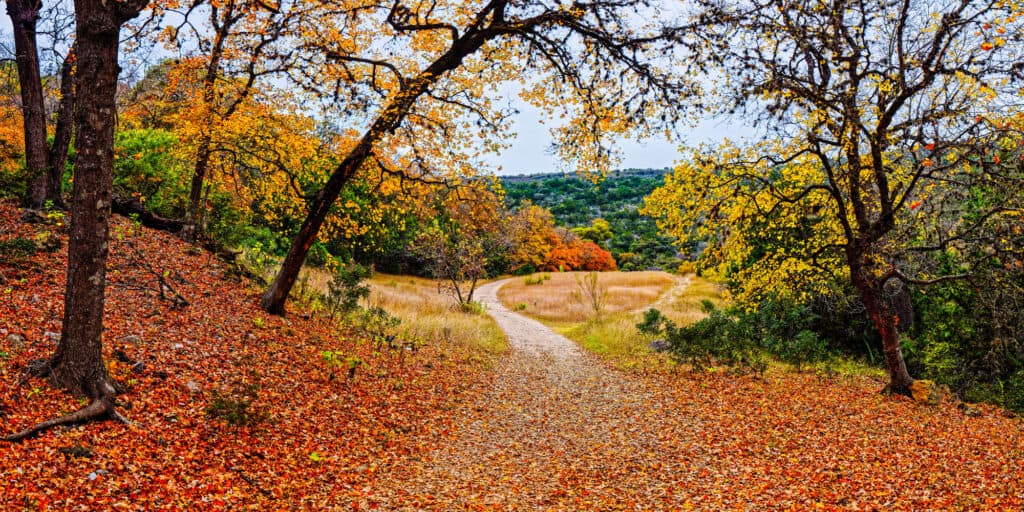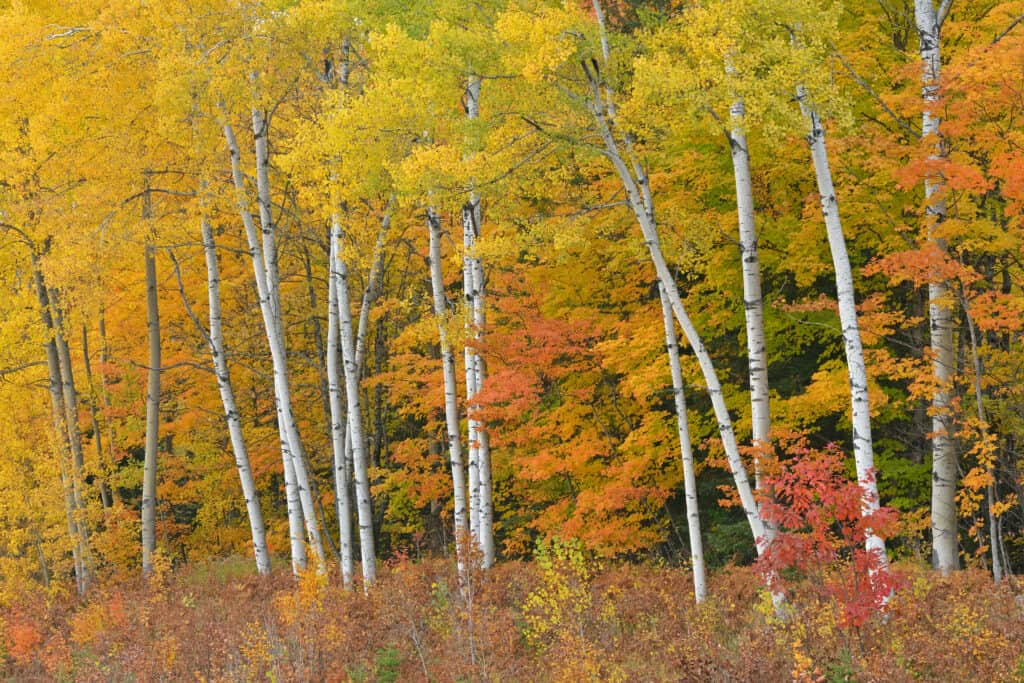As the seasons change, you may be asking yourself, not for the first time: why do leaves change color in the fall? A phenomenon that happens year after year, many different types of trees and tree species change color and lose their leaves as summer ends, but why does this happen? Is it an event that occurs within all trees, or just specific types? We will discover in more details in the article below.
Why do Leaves Change Colors in the Fall?
Leaves change color in the fall primarily because of the change in weather, and this alteration only affects deciduous trees. As temperatures shift and the days get shorter in fall, trees have less sunlight available. With less sunlight, the leaves found on deciduous trees stop producing chlorophyll, leading to less green and more red or yellow tones.
But what are all of the factors that cause leaves to change color during the autumnal season, and what are some of the most beautiful trees that change color when fall arrives? Let’s talk about them now!
Factors That Lead to Leaves Changing Color

Leaves change color in the fall primarily because of the change in weather, and this alteration only affects deciduous trees.
©Silvio Ligutti/Shutterstock.com
There are a number of factors that lead to leaves changing color in the fall. For example, the weather is one of the primary reasons why deciduous trees change color. As the days change and bring more darkness in, trees slowly stop producing chlorophyll, the chemical found in plants that produces a green pigment within their leaves.
To prepare for winter, deciduous trees halt chlorophyll production and generally go into a state of dormancy or hibernation. In order to survive during the colder months, trees conserve their energy and stop producing chlorophyll, especially when you consider the fact that trees aren’t getting nearly as much sunlight during this time of year!
There are other chemicals responsible for fall foliage on deciduous trees: carotenoids, xanthophylls, and anthocyanins. Carotenoids primarily produce orange leaves, while xanthophylls create yellow hues. Anthocyanins make gorgeous red leaves, but these chemicals don’t simply activate all at once.
The weather and frost date greatly affect when these colors shine through, and each individual tree contains certain levels of each of these chemicals. This means that all trees produce their own unique leaf transformation come fall! You may even notice that the same tree produces different colored leaves, year after year, depending on the chemical content found in each individual leaf.
Types of Trees That Change Color In the Fall

A sign of drought damage or a lack of energy is when your deciduous tree simply loses all of its leaves without changing color at all.
©Dean Pennala/Shutterstock.com
There are a number of different types of trees that change color in the fall. All deciduous trees are capable of this unique transformation, while evergreen trees are not. However, keep in mind that many different factors alter whether or not deciduous trees transform in the fall, including drought conditions, sun exposure, and soil nutrient content. You may find that your deciduous tree simply loses all of its leaves without changing color at all; this is typically a sign of drought damage or a lack of energy within the tree.
Some of the most popular tree varieties that change color in the fall include:
You may have heard about the beautiful fall foliage that occurs in New England or other mountainous areas of North America. There is a high concentration of various deciduous trees in these areas, and the fall weather along the east coast is perfect for producing beautiful colors! With crisp mornings and bright sunshine throughout the day, deciduous trees easily produce the chemicals responsible for iconic fall colors!
What Trees Don’t Change Color In the Fall?

There are other chemicals responsible for fall foliage on deciduous trees: carotenoids, xanthophylls, and anthocyanins.
©Anna Westman/Shutterstock.com
Coniferous trees don’t change color in the fall, which is one of the reasons why they are also called evergreen trees. While these types of trees may lose their leaves or needles in the winter, the transformation that occurs within deciduous trees doesn’t occur in coniferous ones. But do evergreen trees transform in any particular way when the seasons get chilly and the days get shorter?
Most evergreen trees are needled, such as pine trees. The bulk of deciduous trees are also known as broadleaved trees, and their leaves don’t have a protective coating on them like coniferous leaves do. Given this coating and the fact that coniferous trees don’t contain all of the same chemicals as deciduous ones, they remain green year after year, shedding their needles every few years or so.
Some popular coniferous tree varieties include:
Whether you want an elegantly shifting garden landscape as the seasons grow chill or you want an evergreen backdrop, the way that trees transform in fall is a fascinating process. Through chemical processes and a direct adjustment to seasonal changes, trees have beautiful leaves to show off whether they are green, red, yellow, or orange!
Up Next
- The 10 Largest Trees in the World
- The Different Types of Evergreen Trees
- Japanese Maple Seeds: Grow Your Own Maple Tree!
The photo featured at the top of this post is © NataliaKuzmina/Shutterstock.com
Sources
- Physiological changes of leaves of several fall color trees during color changing period in autumn and winter., Available here: https://www.cabdirect.org/cabdirect/abstract/20123372003
- Carotenoid based vegetation indices for accurate monitoring of the phenology of photosynthesis at the leaf-scale in deciduous and evergreen trees, Available here: https://www.sciencedirect.com/science/article/pii/S0034425719304262
Thank you for reading! Have some feedback for us? Contact the AZ Animals editorial team.






